Secrets of growing strawberries - from planting to grooming
Strawberry is one of the most popular berries. She is adored by both children and adults. To grow beautiful and tasty strawberries, special efforts are not required, the main thing is to choose a tasty variety for growing and follow the rules of agricultural technology.
Content:
- The best strawberry varieties to grow
- Soil preparation and planting
- Strawberry Care Tips
- Diseases and pests: control and prevention
The best strawberry varieties to grow
All strawberry varieties are divided into 4 groups:
- berries that can be picked once a year
- remontants, which give berries several times per season
- varieties with small fruits
- ampel varieties are climbing plants
Early varieties:
- "Zarya". She does not give a mustache, is resistant to frost. The berries are ovoid and medium in size. The weight of the berries of the first harvest is 22-24 g, then the berries become smaller and their weight is 7-9 g. The disadvantage of the variety is that it is not resistant to wilting and powdery mildew.
- Meatland. It has large fruits, they are cone-shaped and bright scarlet in color. Leaves rarely grow on the bush.
- "Kokin Clery". The crop can be harvested in late May and early June. The berries are very sweet, their weight is 25-40 g. The disadvantage is that strawberries do not have a very high yield.
Medium ripening varieties:
- "Hungarian Giant". Berries weigh up to 80 g. Bushes are large and spreading. Strawberries are resistant to disease and frost. Has good transportability.
- "Queen". Berries are cone-shaped, burgundy-red. From 1 m? can be harvested with proper care up to 2.5 kg of fruit. The weight of the first generation berries is 40-50 g. In the future, the berries become somewhat smaller and have a weight of 15-30 g. The variety is frost-resistant, drought-resistant. But if in winter there is little snow and the temperature is -15? C, then flower buds can be damaged. Therefore, it is covered with spruce branches or spunbond for the winter.
- "Marmalade". One berry has a mass of 25-40 g, up to 750-850 g of fruit can be harvested from a bush. The bushes are sprawling, powerful, with many shoots or whiskers. The variety prefers soil with neutral characteristics.
- The varieties are also in demand: Elite 975-12-72, Star of the East, Tenira, Cambridge Favorite, Pegasus, Astra.
Late ripening varieties:
- "Hercules". He has large berries, they taste sweet and sour. The yield from the bush is high. The variety is resistant to fungal diseases.
- Gardeners also appreciate the varieties: Florenc, Pandora, Mine Schindler, Pharaoh, Voronezh.
Repaired large-fruited varieties:
- Variety "Elizabeth 2". Strawberries are planted in open ground. The berries can be picked from May to September. On average, one berry weighs 50 g, but some berries reach a weight of 125 g. From 1 m2, up to 12 kg of fruits are harvested, since it is best to plant 6 bushes per 1 m2. The berries are very sweet, they are perfectly transported. If there are enough strawberries fertilizers, then up to 2 kg are harvested from one bush. During the season, the bushes grow a very small number of whiskers - 4-5.
- "Temptation". It has sweet berries and a nutmeg flavor. The crop is harvested from May to autumn frosts. The weight of the berries is 30 g. The flesh of the fruit is dense and juicy.
- "Moscow Delicacy". It has a berry weight of 15-35 g. The berries have a cherry aftertaste. The variety has excellent resistance to disease and frost.
- "Diamond". The weight of the berries is 20 g. The variety grows a large number of mustaches. Has a strong resistance to disease and pests.
- "Evie 2". The fruits are sweet, the flesh is juicy and firm. Berry weight up to 20 g. The variety is drought-resistant.
Varieties of remontant small-fruited strawberries:
- "Forest Fairy Tale". Bushes of medium and compact size, a large number of inflorescences. It has conical fruits, they taste sweet and sour. Berry weight - 5 g. "Forest Fairy Tale" has a high yield.
- "Ali Baba". The weight of one berry is 3-5 g. The bushes grow up to 15 cm in height. One bush has many inflorescences. The berries are conical in shape and have a bright scarlet color. The variety has a high yield, drought tolerance, disease and pest resistance.
- "Ruyana". The bushes are compact. The berries emit the aroma of wild strawberries, they are bright scarlet in color. The variety begins to bear fruit very early, 2 weeks earlier than others. Has a high yield, drought-resistant, resistant to pests and diseases.
- "Alexandria". Berries weigh up to 7 g. It has a high yield and is unpretentious in care.
Ampel strawberry:
- Variety "Alba". "Alba" has large, elongated bright scarlet berries. They are sweet and have a dense core.
- Variety "Geneva". "Geneva" bears fruit at the earliest in comparison with other varieties. The variety is high-yielding. Up to 3 kg of berries are harvested from 1 bush.
Soil preparation and planting
The earth is dug to a depth of 25 cm a month before planting. First, 50 g of azofoska, 10 kg of rotted cow dung are poured onto 1 m2 of soil, or compost, 1 glass ash, then dig up the soil.
If your site has heavy clay soil and a close level of groundwater occurrence, then you need to make raised beds, add baking powder to them - husks from rice or seeds.
It is best to plant strawberries in August and September, but you can also plant them in early spring.
In the open field, seedlings can be placed in 1 row, 2 rows, 3 rows. The distance between the rows is 50 cm, an indent of 30 cm is observed between the bushes. They are also planted with paired ribbons, observing an indent of 70-80 cm. In greenhouses, 60-65 seedlings are planted per 1 m2 in a checkerboard pattern. In the fall, the bushes are thinned out.
Landing rules:
- First, in the garden bed, dig holes with a depth of 12-15 cm along the cord, pour 1 tbsp into each hole. a spoonful of ash, 1 teaspoon of azofoska, after the hole, pour water. Put a small mound in the hole and place a seedling, place it so that the roots are directed down and descend along the sides of the hill.
- Next, carefully cover with earth, trying not to pour soil on the heart of the bush. The heart of the strawberry should be flush with the soil.
- Then pour 0.5-1 liters of water under each bush.
- Further, if the sun is shining, then shade the strawberries and water them constantly for 2 weeks.
Strawberry Care Tips
Remontant strawberries are grown in one place for 1-2 years, and ordinary strawberries for up to 3 years. Then they dig up the beds in a new place, in the old one they start digging beds for strawberries only after 4 years.
To care for strawberries you need:
- Mulching... You can mulch the ground, then it will not overheat, moisture will evaporate more slowly, the weeds will stop growing. The soil is mulched with rotted sawdust, straw, peat, seed husks, hay, and freshly cut grass.
- Watering... In hot weather, water the strawberries every 3-4 days. It is best to water in the morning.
- Top dressing. In early spring, pour in 0.5 liters of solution mullein or bird droppings under a bush or dissolve in a bucket of water (10 l) 1 tbsp. spoon urea and pour 0.5 liters of composition under the bush. Before blooming buds, and even before the formation of berries, pour the bushes with a solution from a bucket of oxen (10 l) and 1-2 tbsp. spoons of azofoska. The consumption rate of the solution is 1 liter under the bush.
- For a better ovary, spray the bushes over flowers and leaves with solutions of microelements: add 1 teaspoon of Ryazanochka or Sudarushka to a bucket of water (10 l). Alternatively, add 2 tbsp into a bucket of water (10 l). spoons of "Nutrivant plus fruit". Do this once a month. Feed and water the repairing varieties more often.
- Care after picking berries. Remove any yellow, old, or diseased leaves.Some gardeners cut the leaves completely, but this can only be done at the end of July, so that Strawberry managed to recover. The leaves are cut so as not to damage the hearts.
Diseases and pests: control and prevention
The most common strawberry pests:
- Strawberry mite. The pest gives up to 10-15 generations per season. Strawberries that are affected by a mite have shriveled and deformed berries and weak leaves. For prophylaxis in the spring, spray the bushes with drugs Nero, Aktelik, Sherpa, Fufanon. You can also spray the bushes after picking berries and before the onset of cold weather. If a tick is affected, spray strawberries with these preparations 3 times every week. Do it before flowering strawberries and berry tying. Make sure that the drug gets on the heart of the bush, as there are usually ticks on the heart. In autumn, cut off all the leaves and burn, leave the hearts, but no leaves. Spray hearts intensively with one of the preparations. Feed the cut strawberries with nitrogen, sprinkle with Epin, Aminokat. You can use the biological product Fitoferm. Spray them on strawberries 3-4 times per season. Also cut and burn damaged leaves. Since Fitoferm is harmless, even bushes with berries can be sprayed with it. A day after spraying, you can already eat strawberries.
- Nematode... A nematoda is an almost transparent tiny worm 0.5-1 mm long. It sucks the juice from the leaves and stems. The leaves affected by the nematode become wrinkled and curly, the stems become shortened, thick, the berries are hard. Bushes damaged by a nematode need to be shed with a solution of bleach, then uprooted and burned. And the pits are also sprinkled with bleach. The remaining bushes are treated with a solution of mercaptophos, phosphamide. This is done 2-4 times every 3-5 days.
To prevent fungal diseases in early spring, spray strawberries with a solution of Bordeaux liquid. Repeat spraying in autumn.
In the spring, when the buds have not yet appeared, spray the bushes from gray rot, powdery mildew, brown spot, diluting the drug in a bucket of water (10 l) "Topaz".
More information can be found in the video:



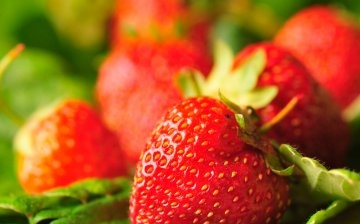
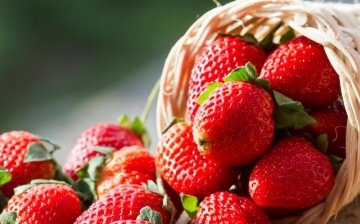
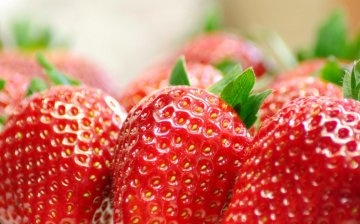
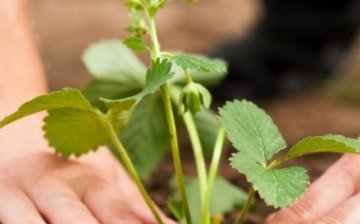
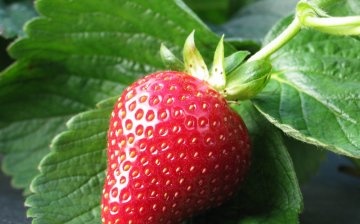
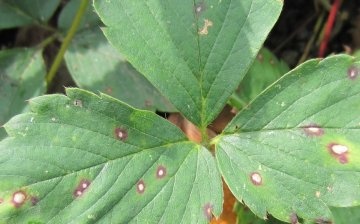







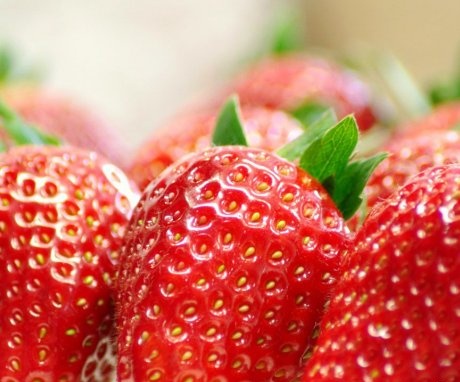
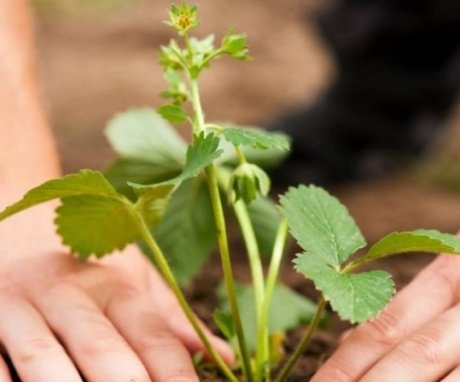
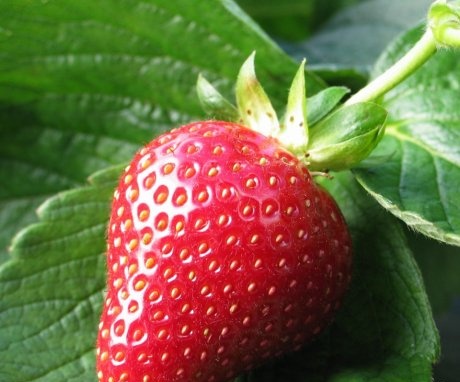
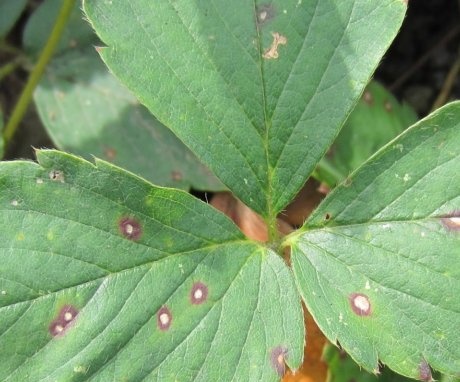
We have always grown strawberries as seedlings, they quickly take root and begin to put on a mustache. The berry harvest depends on the mustache torn off in time, fertilization and watering. In addition, do not forget to weed the berry so that the soil is loose and oxygen is well supplied to the roots of the plant.
Strawberries are very fond of watering, they also need to be transplanted from time to time from place to place, a very time-consuming task that is not suitable for everyone, we have a small area with strawberries, so I know what I am writing about.